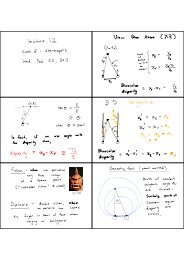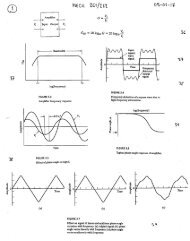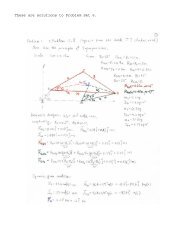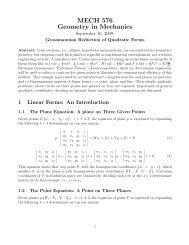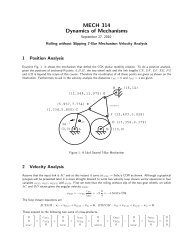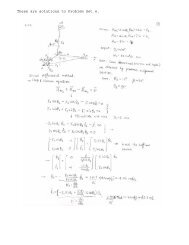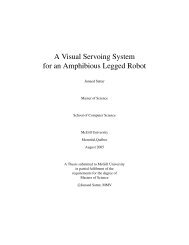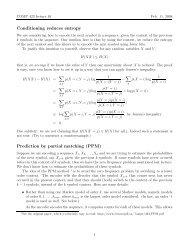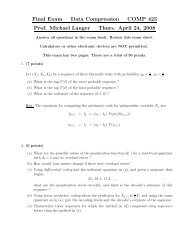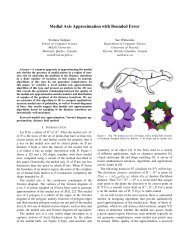Medial Spheres for Shape Representation - CIM - McGill University
Medial Spheres for Shape Representation - CIM - McGill University
Medial Spheres for Shape Representation - CIM - McGill University
Create successful ePaper yourself
Turn your PDF publications into a flip-book with our unique Google optimized e-Paper software.
4–6 The angles of interest in Case 2. . . . . . . . . . . . . . . . . . . . . . . 94<br />
4–7 When (p, P ) is orthogonal to (x, y) and dip = L, d = 2L, the y-coordinate<br />
of Y is ≈ −0.21L. . . . . . . . . . . . . . . . . . . . . . . . . . . . . 95<br />
5–1 An illustration of S a rad (v) <strong>for</strong> a given U a (based on a figure in [37]). . . . . 105<br />
5–2 The case when κri = −proj U ∂U1<br />
∂v1<br />
1 = . . . . . . . . . . . . . . . . . . . . 109<br />
r<br />
5–3 The medial axis of this object consists of low-object angle segments<br />
(dashed lines) and a high-object angle segment (bold line). When<br />
approximating the medial axis with a set of points, we only retain points<br />
on high-object angle segments of the medial axis. The boundary of the<br />
union of the associated medial circles approximates the original object.<br />
<strong>Medial</strong> point m is equidistant from points A and B on the boundary.<br />
Surface curvatures at points A and B may be found using the radial<br />
shape operator, while <strong>for</strong> point C a different strategy is used. . . . . . . 113<br />
5–4 Left: Approximate medial points coloured according to principal curvatures<br />
on the solid’s boundary. Centre: Projection of curvature values<br />
at the approximate medial points to the boundary of the solid. Right:<br />
Curvature values obtained using the method in [100]. The colourmap<br />
used is shown in the bottom right corner. See the associated text <strong>for</strong> a<br />
discussion of these results. . . . . . . . . . . . . . . . . . . . . . . . . 117<br />
5–5 The principal curvature directions recovered on the surface of a cup. . . . 118<br />
5–6 Top: An oblate spheroid coloured by principal boundary curvature κ1<br />
(left) and κ2 (right). Middle: Points near the medial surface of the<br />
oblate spheroid coloured by principal boundary curvature. Bottom:<br />
Respective principal curvature estimates κ ′ 1 and κ ′ 2 shown on the medial<br />
surface. The mean absolute error of the estimation of κ1 and κ2 is shown<br />
below each column. . . . . . . . . . . . . . . . . . . . . . . . . . . . . 122<br />
6–1 (a) A union of the set of balls corresponding to three medial sheets<br />
decomposed using the power diagram; (b) the dual of the decomposition<br />
of the set of balls. . . . . . . . . . . . . . . . . . . . . . . . . . . . . . 126<br />
6–2 A pear model approximated using a progressively larger number of sheets<br />
of medial balls. Most of the shape is covered using 4 sheets only. . . . . 127<br />
xvi



